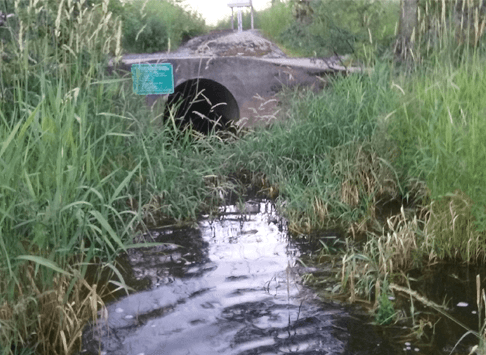Stormwater Regulations
Overview
The Federal Clean Water Act establishes standards for surface water and makes it unlawful to discharge pollutants into the Waters of the United States, unless permitted. Embedded within this Act and administered by the United States Environmental Protection Agency (EPA) is the National Pollutant Discharge and Elimination (NPDES) permit program which establishes rules and procedures related to the permitting process.
In New York State, the NPDES program is administered by the New York State Department of Conservation (NYSDEC). and is called the State Pollutant Discharge and Elimination System (SPDES) permit program. Failure to apply for permit coverage or failure to implement permit requirements can result in fines of $37,500 per violation, per day, along with criminal, civil and administrative penalties. Penalties are embedded in Federal law and both EPA and NYSDEC can take action against a polluter. Triggers for enforcement action vary, with observed pollution often the starting point for legal action.
Stormwater Permits
While the content of all SPDES permits includes standard language as required by the Clean Water Act, depending on the type of regulated facility and pollutants to be addressed, permit requirements vary.
The stormwater permits focus on stormwater runoff, which is water from rain or melting snow that doesn’t soak into the ground, but runs off into waterways picking up pollutants as it flows from rooftops, over paved areas, through sloped lawns, and over bare soil. They are general permits which cover a large number of similar dischargers, specifically runoff from industrial facilities (Multi-Sector Permit); discharges from municipal separate storm sewer systems in urbanized areas (MS4 Permit); and discharges related to construction activity disturbing one or more acres of land (Construction Activity Permit).
The MS4 Permit and Construction Activity Permits are of particular interest to regulated municipalities as they are intertwined, with each permit pointing to a mandated task in the other permit. Below is a short summary of each permit; however the permits are best understood by reading each permit carefully.
MS4 Permit
The NYSDEC SPDES General Permit for Stormwater Discharges from Municipal Separated Storm Sewer System (MS4) Permit No. GP-0-24-001 includes six minimum control measures: public education and outreach; public involvement/participation; illicit discharge detection and elimination (IDDE); construction site stormwater runoff control; post-construction stormwater management; and pollution prevention/good housekeeping for municipal operations. Regulated entities, often referred to as “MS4s”, need to develop and implement a program which addresses each of those control measures. While there is some program flexibility, there are also specific tasks listed in the permit.
Regulated “municipalities” reside within census designated urbanized areas and include a range of public sector entities including, but not limited to, towns, cities, and villages.
Public participation is a key element of the MS4 Permit and as such certain documents are made available for public review. They include an annual report which is submitted to NYSDEC by April 1 and stormwater management program goals and related program implementation documents.
Construction Activity Permit
The NYSDEC SPDES General Permit for Stormwater Discharges from Construction Activity Permit No. GP-0-25-001 requires owner-operators of sites disturbing one or more acres of land to develop a Storm Water Pollution Prevention Plan (SWPPP). SWPPPs describe how storm water runoff will be managed during and post construction. Typically they include site plan drawings; a narrative describing which stormwater practices will be used, when and why; operation and maintenance information pertaining to built stormwater management practices; and other items specific to the site.
Construction site stormwater control must conform to the New York Standards and Specifications for Erosion and Sediment Control, or “Blue Book”; while post-construction practices must conform to a suite of acceptable practices described in the New York State Stormwater Management Design Manual. In 2010, revisions to the Design Manual included runoff reduction requirements to be addressed using listed green infrastructure practices.
Additional permit requirements relate to legal accountability, training, and inspection procedures. The purpose of the permit is to avoid a water quality violation, and a visible standard is described in the permit.
Construction Activity, MS4 SWPPP Acceptance Form, and Local Laws
While construction activity permit requirements are national in scope and required of any site disturbing one or more acre of land, construction activity in a regulated town, village, or city requires an added level of review, as mandated in both the Construction Activity and MS4 permit.
Specifically, owner-operators seeking permit coverage must first obtain an MS4 Permit SWPPP Acceptance Form stating that the municipality has reviewed and accepts the SWPPP. The municipalities, in turn, as stated in their MS4 Permit need to adopt local laws giving municipal officials the authority to review and accept these SWPPPs, thus providing a full vetting of the SWPPP and an informed sign off on the MS4 Permit SWPPP Acceptance Form. The local laws also include enforcement action should the site generate a water quality violation.
Essentially the local law and other MS4 Permit requirements empower and require that local municipalities administer the Construction Activity Permit, providing front-line oversight of Construction Activity Permit requirements. Regulated municipalities disturbing more than one acre of their own land must all obtain Construction Activity Permit coverage.
Another local law, also adopted by municipalities as required by the MS4 permit, empowers a municipality to take legal action should a person discharge pollution into a catch basin, closed pipe, drainage ditch, or other stormwater related infrastructure owned and operated by the municipality.
This law, known as the illicit discharge detection and elimination (IDDE) law, applies to all persons, and types of activities, with sediment laden runoff from construction sites consider non-stormwater and subject to enforcement action. This law, however considers a variety of activities and types of discharges as tracked to the stormwater infrastructure.
ADOPTED LOCAL LAWS
Town of LeRay Illicit Discharge
Town of Rutland Illicit Discharge
Town of Watertown Illicit Discharge
Village of Brownville Illicit Discharge
Clean Water Act Consequences

